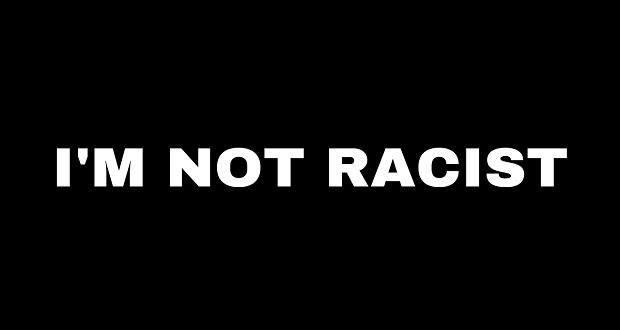It is now 16 months since the George Floyd murder and the outpouring of support from many major organizations to prioritize anti-racism efforts. This period of history is being dubbed as a “racial reckoning.” Companies pledged to put more Black people in leadership positions, focus more recruiting efforts at HBCU’s, increase their spending with Black-owned businesses and donate to Black-run not-for-profits. How are we doing on these commitments and by whose standards?
I am sure that some top leaders would say they are on course and are living up to their commitments. Others might say that while they are still committed, other priorities—such as attending to the impact of the unrelenting pandemic—have caused delays. While still others, realizing the magnitude of the task of dismantling systemic racism in their organization and beyond is just too much to tackle, have abandoned their efforts altogether. Black and Brown workers, by and large, were skeptical of these proclamations from the beginning based on their day-to-day inequitable workplace experiences.
So how are we doing?
According to a report published in Marketplace, there is certainly room for improvement by the “standards” these organizations set. Here are a few facts that the writer revealed:
- Companies pledged $50 billion to racial equity in 2020, and according to a study by Creative Investment Research only $250 million of that money has been spent or even devoted to a specific initiative. It’s early, but there should be mechanisms in place to track the progress in order to hold these organizations accountable. No such formal metrics exist.
- About two dozen companies took the 15 Percent Pledge to dedicate 15% of their retail shelf space to Black-owned businesses. Sephora is one of those companies that took the pledge. In 2020 they included 8 Black owned companies among the 400 brands they sell. They committed to double that number by 2021. In May 2021, that number had grown to 13 or 3%, well short of the 15% pledge. Hopefully they are still working diligently to make good on their pledge, as it is not clear if there was a timeline associated with the commitment. Sephora spokesperson said they plan to publicize their progress “this summer.” I could not find an update.
- Proctor and Gamble set a goal to have 40% of its workforce be comprised of multicultural employees. The 2020 number was 25%. Moreover, it set a goal to increase its Black workers from 10% to 13%. However, as of May 2021, the number was still 10%.
- PepsiCo pledged to increase its Black managerial population by 30% by 2025, which would bring the number to 10% of leadership. By my standards this seems like a modest, achievable goal. As of this year’s first quarter, 8% of their leaders identify as Black or African American.
- Adidas set a goal that 30% of all new hires would be Black and Latinx. Their spokesperson said they are making progress towards this goal.
- Intel set a goal to give $1million to organizations devoted to anti-racism and social justice. They have done so, plus an additional $200K. They also pledged to spend $250 million annually with Black-owned businesses.
- Google committed to increase underrepresented groups at senior levels by 30% by 2025. The company also added another goal to more than double the number of Black+ Googlers at all other levels by 2025. This is against a backdrop of claims by Color of Change earlier this year that the work environment for Black Googlers is hostile and retaliatory.
In addition to these examples, at The Winters Group we are witnessing a fair amount of resistance from clients in addressing the core concepts of anti-racism in learning experiences. We continue to be asked to prioritize leader and dominant group comfort over exploring the deep roots of racism. The organizational pushback is consistent with what we are witnessing in society in general, such as protests against critical race theory, efforts to ban the teaching of our sordid racist history in schools, and even debate as to whether equity should be the ultimate goal.
We're witnessing some resistance from clients in addressing core concepts of anti-racism in learning experiences. We continue to be asked to prioritize leader and dominant group comfort over exploring the deep roots of racism. Click To TweetNotwithstanding the resistance, are these goals aggressive enough and by whose standards do we decide? And more importantly, who is holding these organizations accountable to make good on their promises? While it is laudable to set numeric goals, such efforts can soon become performative, check-the-box activities that in the end do little to change inequitable, oppressive systems.
Who is holding these orgs accountable to make good on their promises? While it's laudable to set numeric goals, such efforts can become performative, check-the-box activities that do little to change inequitable, oppressive systems. Click To TweetHistorically, the standards for assessing DEI efforts have been quantitative, focusing, as the examples above, on hiring and promotions internally and supplier diversity and philanthropy externally. Our standards need to expand to include qualitative measures such as the experiences that Black and Brown people have as employees, and to what extent systems are actually being challenged and changed. One major reason over the past 50 years that we have not made progress in representation is “the revolving door syndrome.” The environment in many organizations is so oppressive that Black and Brown talent leave, some seeking a more inclusive culture elsewhere, some striking out on their own to start their own businesses.
Our standards need to expand to include qualitative measures such as the experiences that Black and Brown people have as employees, and to what extent systems are actually being challenged and changed. Click To TweetOne recent study showed that from 2014-2018 20% of Black people started businesses, compared to 12% of whites. In research by Brookings on the progress in Minneapolis-St. Paul since George Floyd’s murder and others before (Philandro Castile) and after (Daunte Wright), they found that corporate promises have not made Minneapolis more equal and the goals expressed by Black executives were different than those of white executives. In a meeting with Minneapolis-St. Paul business leaders that Brookings’ representatives attended, they observed that the answer to the facilitator’s question, “What is your aspiration for what success of our work should look like?” was vastly different for Black executives than white ones. Black executives named dismantling institutional racism and leveraging corporate partnerships to close the regional wage gap while white executives envisioned less-concrete results such as equal opportunity, satisfaction in knowing they had made a difference and a world where merit informs how people succeed.
With different visions of success, it will be difficult to hold leaders accountable unless there are very specific measures.
So how should we measure the success of racial reckoning efforts, by whose standards and by what accountability measures?
- Include BIPOC employees in deciding the accountability measures. Too often the metrics are developed without input from those most impacted. The measures need to be more than just how many BIPOC were hired. For example, to what extent do BIPOC report they are regularly subjected to micro-aggressions?
- Before holding leaders accountable, ensure that they understand why and what they are being held accountable for. Often, we get resistance when there is not a shared understanding of key concepts like equity, cultural competence, and inclusion. When organizations tie DEI outcomes to performance and pay without first providing the education that leaders need to deliver on these goals, there is frustration and resistance.
- Measure equity not equality. Equality means we treat everyone the same. Equity means that we correct past injustices to achieve equality. Equity comes first. We will know when we have achieved equity when we can no longer predict outcomes by one’s identity. Conduct predictive analytics to understand the specific circumstances at your organization.
- Focus just as much attention on ensuring equitable systems as you do on recruiting Black and Brown talent. Interrogate your policies and practices with a racial justice lens. Formally and transparently evaluate your organizational culture by listening to the employee groups most impacted by systemic racism. Break the data out by leader and hold them accountable for improving results.
- Anticipate resistance. Name the types of resistance that might manifest as responses to change such as disinterest, denial, polarization, ambivalence and frustration, and put measures in place to address it and hold leaders accountable for these responses.
If this is really a racial reckoning, it will take some time to see the results. I would say five years is a reasonable amount of time inasmuch as we have claimed to be addressing DEI for more than 60 years now. I have personally been doing this work for 37 years. In this five-year window we will need to be vigilant in tracking progress so as not to allow the backsliding that we are already beginning to see happen only after 16 months! Let’s hold the powers that be accountable, holding them to standards that address the roots of racism, not simply the symptoms.
If this is really a racial reckoning, it will take time to see results. We will need to be vigilant in tracking progress so as not to allow the backsliding that we are already beginning to see. Click To Tweet



















